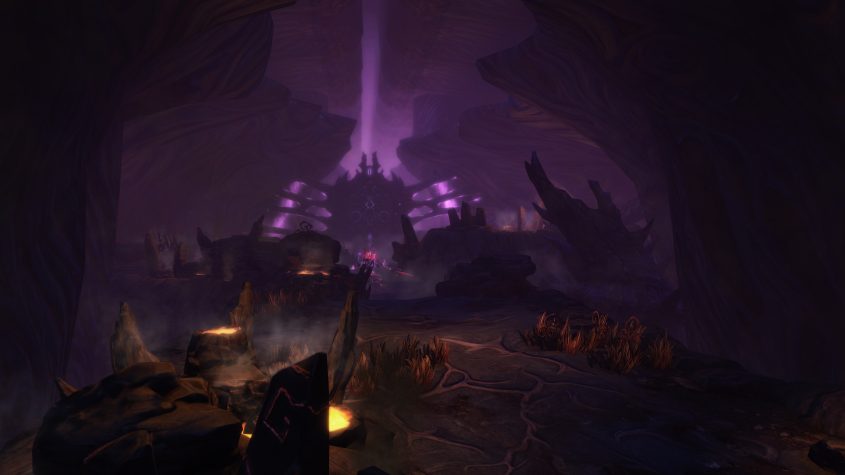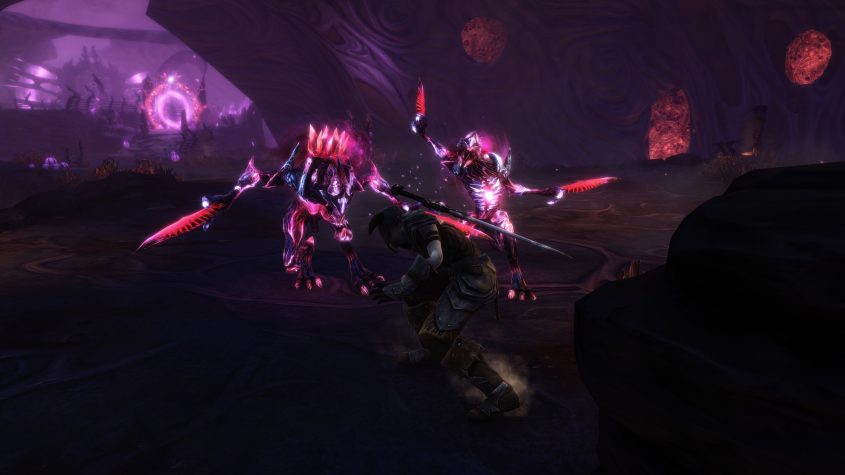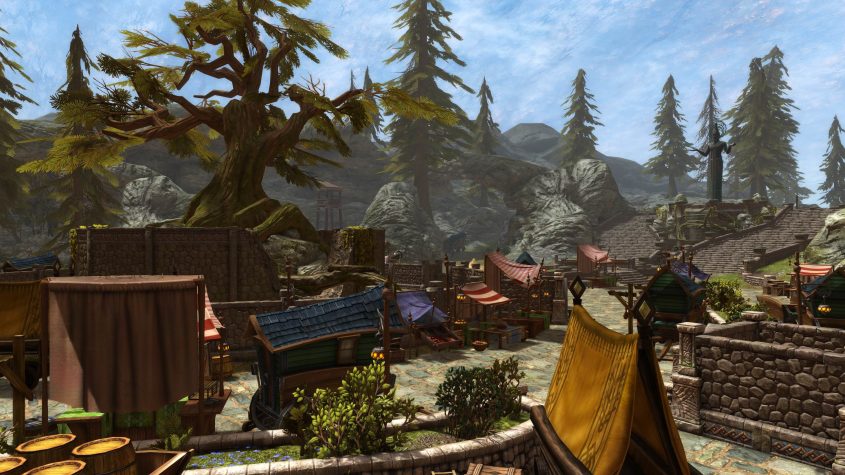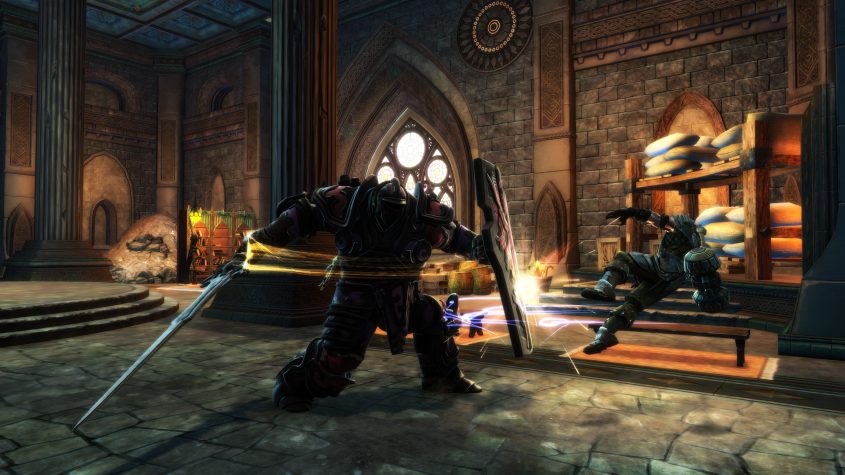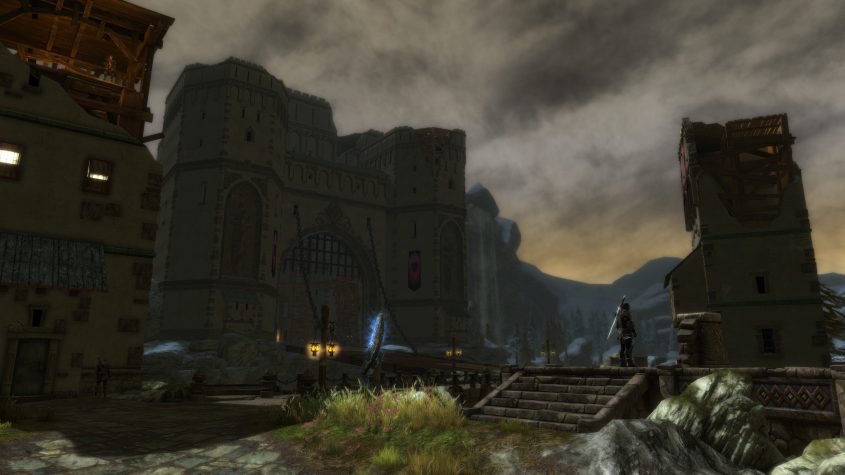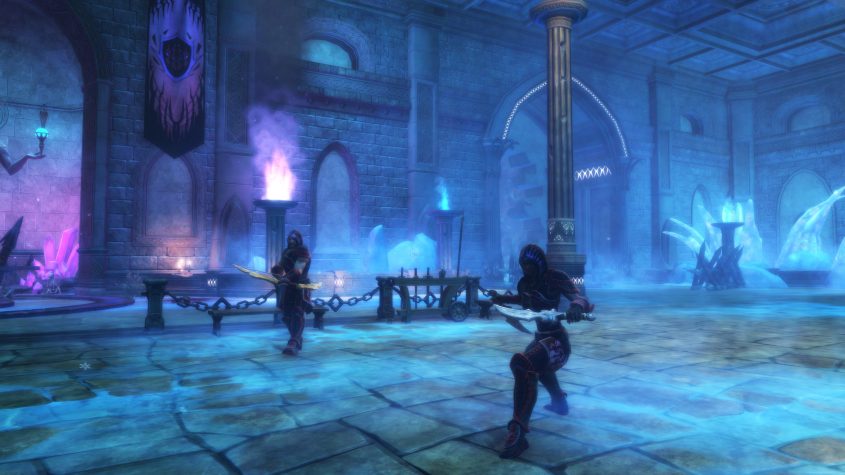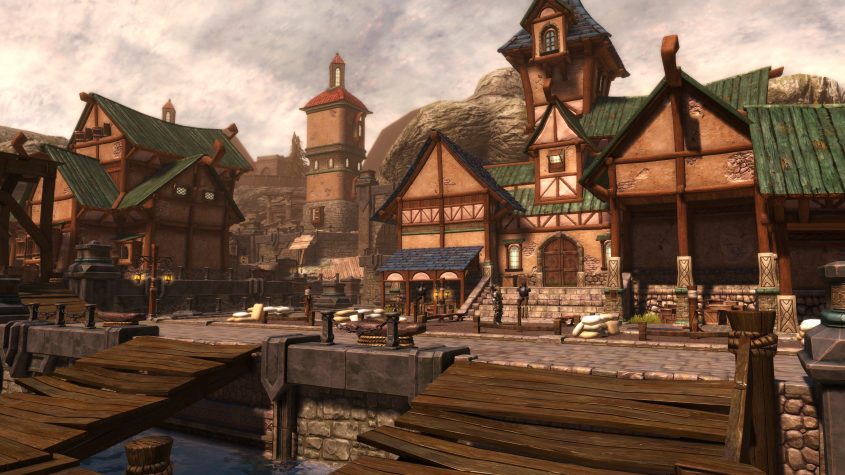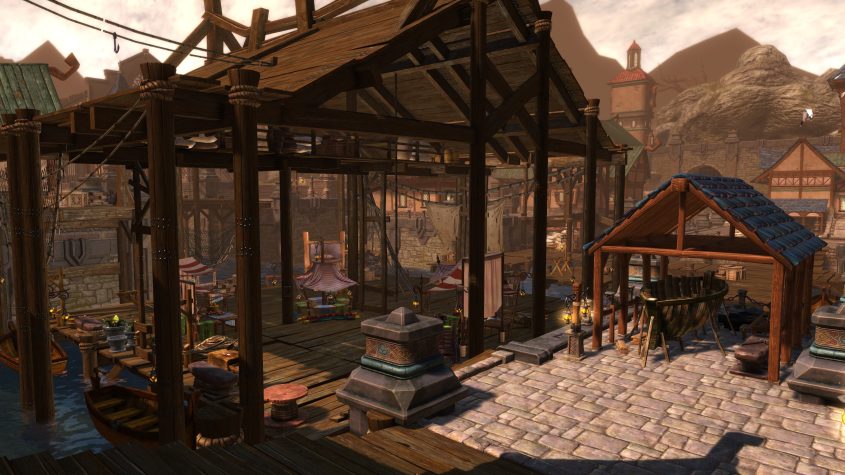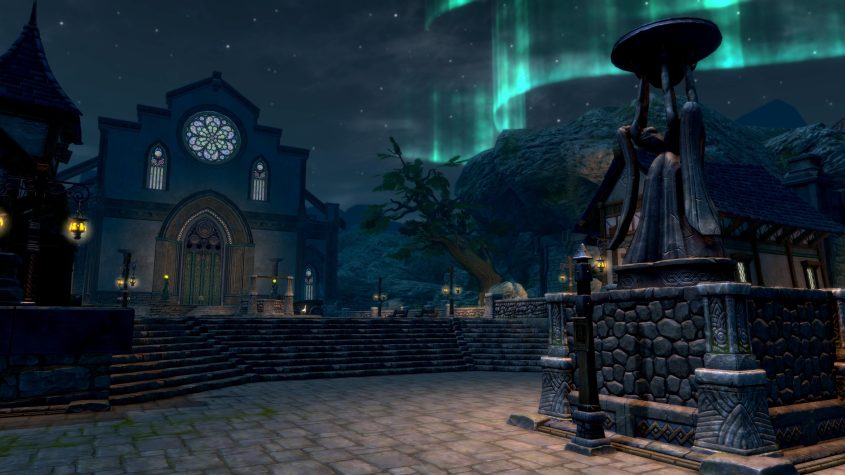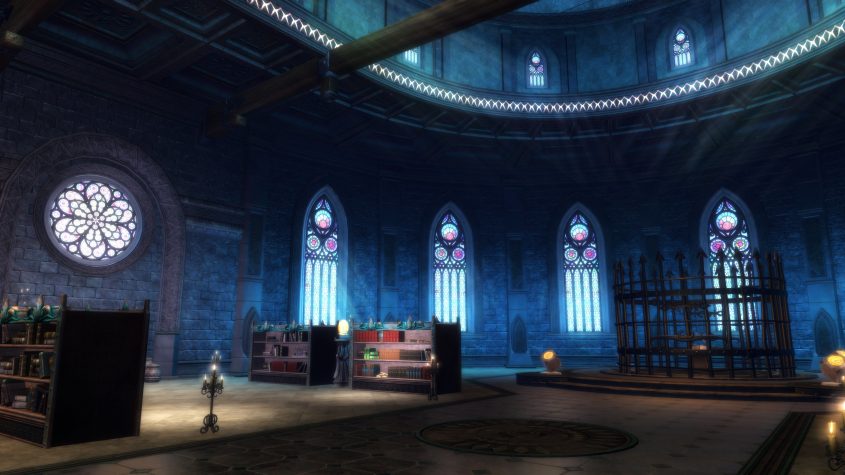Kingdoms of Amalur: Re-Reckoning – Fatesworn was the sixth project I was involved in at KAIKO – an all-new DLC for the remaster we previously worked on – and yes, it was easily the biggest project I’ve worked on so far. Fatesworn marked the first time we were able to work on something entirely new instead of only remastering a game. This was not only very exciting for all of us, but also brought a number of unique challenges with it. First of all, here’s a short summary of the DLC by publisher THQ Nordic:
Journey to a brand new Amalur environment filled with snowy tundras, deep caverns, and treacherous enemies, and visit mountain villages and the ancient lakeside city of Crownhold. Master the unstable power of Chaos with a unique new non-combat Skill and class of weapons and armor. As the fabled Fatesworn, you will wage a last battle against the Niskaru and their Chaos brethren, as Chaos dungeons turn every region in Kingdoms of Amalur: Reckoning into a potential battlefield.
The main difference between developing a remaster and developing new DLC is that the latter requires the ability to create entirely new game content. For that, special tools are needed, which are often completely unique to the game in question. Unfortunately, none of the original game’s tools were still usable by us. This meant that for any potential assets we wished to edit or add, we had to create entirely new ones.
This turned out to be one of the biggest challenges for us during development. Not only was our core team incredibly small, consisting of only four full-time programmers, but some of the game’s assets were also incredibly complex. Porting them to our technology or making new tools for them was out-of-scope for us – our biggest limiting factor. Since we weren’t able to create certain types of assets, we had to work around a lot of limitations. For example, the amount of things we were able to do with animations was severely limited and we had to find ways of adding new ones despite that.
Additionally, while we did port a lot of asset types to our new build pipeline and while we did create a bunch of new tools, these were often quite immature or had major limitations, making a lot of things challenging to work with. To name just one example, we weren’t able to do any form of motion-capturing for cutscenes, and the same animation limitations mentioned above applied to them. This greatly limited what we could do with our cinematics.
We also didn’t have any tools for editing quests, so in order to implement them, we had to use a combination of raw text-editing, Excel spreadsheets and a bunch of helper scripts. This alone would have made everything notably challenging, but on top of that, the game’s implementation of quests turned out to be very loose, requiring a lot of manual work and scripting to make anything work. This meant that two programmers (including me) basically had to work full-time just to make the quests work.
Internal problems aside, 2020 also marked the year when the COVID-19 pandemic started to reach Germany. The whole team was working in home office for the entirety of the project’s run-time. This not only had an impact on our physical and mental health, but also made internal communication a lot more difficult, adding further complications to the already tricky situation we found ourselves in.
With our team being so small, and with our plans for the DLC probably being a little bit too big, every individual team member had a lot of responsibilities within the project, including myself. Therefore, there were a lot of areas of development I was involved in, including:
- Implementing the entire main quest
- Implementing dialog for all NPCs
- Localization
- Tools
- Converters
- New UI
- Implementing new game mechanics (Chaos weapons, Chaos Portals and more)
- Cinematics
- DLC license management
And more.
In hindsight, there were certainly a lot of things we could have done better. By hiring more people early on and developing better tools, we could have made things a lot easier for ourselves. However, the DLC was originally planned with a much earlier release date in mind (first late 2020, then early 2021). Working with a nearing deadline always ahead of us led us to make the wrong decisions at the most crucial points during development. These are things we definitely plan to improve for whatever project we’re going to work on next.
Despite our problems and despite the project being stressful for everyone involved, we still gave it our all. While we weren’t able to deliver everything we had originally hoped to, I’m still proud at what we ultimately managed to achieve.
